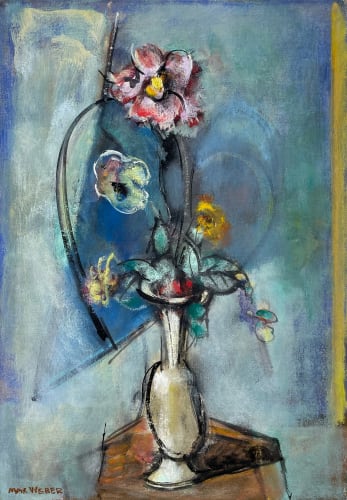Max Weber 1881-1961
Max Weber is an American Modernist painter who was born in Bialystok, Russia in 1881. He moved to Brooklyn, New York at the age of ten, and six years later began studying at the Pratt Institute with Arthur Wesley Dow. After his completion of this program, he relocated to Paris, where he briefly attended the Académie Julian and the Académie Colarossi. He found the classical form taught in these academies to be restrictive, opting for a more expressionistic style instead. It was in Paris that he studied with Henri Matisse and Jean-Paul Laurens and became friends with painters such as Pablo Picasso. Picasso’s influence became apparent in Weber’s later works.
While in school, Weber discovered Cezanne and Gauguin, who influenced his early paintings and were crucial to his development as an artist. Weber began exhibiting works of art in Paris Salons before returning to the United States in 1909. Upon his return, he adopted a more modernist painting style which he kept for the rest of his career. He was criticized for his approach to painting, as he was one of the first artists to bring modernism to the US. He was supported by his friend Alfred Stieglitz, a fellow modernist, and his work was exhibited in several one-man shows at 291, Stieglitz’s gallery in New York City. Ultimately, Weber was successful and became the first American Modernist painter to be featured at an American museum, having a one-man show at the Newark Museum in 1919.

